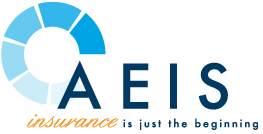Partial Self-Funding Explained

Healthcare costs are rising, and organizations across the country are looking to save money where they can. Doing so without hindering your benefit offerings poses a dilemma for many small and mid-sized firms. If your organization is among the thousands taking a careful look at its options for employee health coverage this year, partial self-funding may be a decision to explore. Read on to learn more about partial self-funding from the employee benefits experts at AEIS.
What is Self-Funded Health Insurance?
You’re probably intimately familiar with the design of a traditional health plan – what’s known as fully insured health coverage. Businesses who carry fully insured health coverage for their employees assume no exposure to the financial risk that accompanies fluctuating monthly claim costs. In this set-up, the insurance company foots the bill for the cost of employee claims, and the business itself just pays the monthly premiums. Your premiums will stay the same each month for the contract term (usually 12 months), affording your business some stability on your balance sheet. Costs, however, while stable, are very high. The appeal of fully insured health coverage, rooted in its predictability, may not be enough to keep many small to mid-sized firms hooked.
Enter self-funding: a different kind of health insurance coverage wherein a business allocates a monthly or annual budget for employee claim costs. The budget you set will be based on a careful estimate as to what claim costs might look like, taking into consideration the relative age, health, and past claims of your workforce. For your employees, the experience likely won’t feel any different at all. They’ll still be able to see the same doctors, visit the same pharmacies, and receive the same level of care that they’re familiar with from being a part of a fully insured health plan. The only difference is the payee at the other end of their insurance claims – instead of the insurance company, it’s their employer.
What is Level-Funded Health Insurance?
A level funded health plan is, in its simplest terms, somewhere between self insured and fully insured health insurance coverage. For businesses that are looking for the cost savings that a self funded plan can provide, but are understandably drawn to the measure of predictability guaranteed by a fully insured plan, level funded health insurance is particularly attractive.
With a fully insured health plan, high monthly costs are guaranteed. Annual rates, however, can soar from one year to the next, sometimes seemingly without reason. Self-insured plans can wreak havoc on a small to mid sized firm’s accounting department, who may be left to scrape up tens of thousands of dollars for claims in a high cost month.
Level funded insurance may deliver the best of both worlds. As part of a level funded insurance arrangement, a business pays a predetermined monthly premium to either the insurance carrier or TPA (Third-Party Administrator). The third party administrator or insurance carrier will then transfer the allotted funds into an account. Costs to cover employee claims, administrative expenses, and stop loss coverage for the business will draw from that account.
Businesses who choose level funded insurance obtain the benefit of stop loss insurance. This insurance caps total yearly claim losses, essentially putting a limit on potential cost exposure, so businesses with level funded plans have some peace of mind about their fiscal year. Many different types of level funded plans exist, and some level funded plans even guarantee businesses can receive a refund of their unused monthly budgeted amounts for claims. If you’re interested in level funded insurance, you’re certainly in good company. In fact, according to the Society of Human Resource Management, 16 percent of firms who have between three and ninety-nine employees have opted for level funded health plans.
What is Partially Self-Funded Insurance?
Similar to level funded plans, partially self-funded plans are an attractive option for businesses looking for a compromise between cost stability and low premium prices.
Many businesses opt to partially self-fund through the provisions of an HRA, or health reimbursement arrangement, which is a way in which employers can step into self-funding and start to take some control. An HRA can act as a complement to traditional health insurance coverage. The funds deposited into an HRA account can be used to cover any “qualified expenses,” for employees, such as health insurance premiums, out of pocket expenses, and pharmacy, vision, and dental costs.
The provision of HRA accounts can allow employers to select a traditional health insurance plan that carries higher deductibles, co-pays, and/or co-insurance. HRA funds step in to “cover” the gap in care an employee might feel with a higher deductible plan. This is a unique way for employers to self fund, as they can control their contributions to the HRAs.
The Benefits of Partially Self-Funded Insurance Plans:
Aside from the unique balance between predictability and cost savings described above, partial self funding may be able to offer businesses key advantages. You should speak to an employee benefits expert to check to see which benefits are applicable, but generally, perks of partial self funding may include:
- Reimbursements can be made either directly to the participant or their provider;
- You may save costs and time associated with administrative work when you provide HRA accounts;
- Employers can retain greater control over costs; and
- The provision of an HRA may avail the employer to certain tax advantages.
With so many interesting benefits of partial self funding, it’s no wonder that the popularity of this health insurance plan model has increased over the last decade.
Deciding whether Self-Funding is the Right Choice for Your Organization:
After learning about self-funding, you’ll want to weigh the pros and cons of this approach to health coverage for your organization. It always helps to talk to employee benefits and insurance experts, and Advanced Estate & Insurance Services, Inc. (AEIS) is here to help. AEIS is a strategist, advocate, and advisor for businesses looking to select, optimize, and maintain the perfect employee benefits package.
AEIS brings more than 35 years of experience in the industry to your advantage. Looking to simplify your benefits processes? It’s time to reach out. Contact AEIS today.
Disclaimer: Any information related to compliance, laws and regulations, or other subject matters in this blog is intended to be informational and does not constitute legal advice regarding any specific situation. The content of this blog is based on the most up-to-date information that was available on the date it was published and could be subject to change. Should you require further assistance or legal advice, please consult a licensed attorney.
We're here to help.
Schedule a free phone consultation today.
Latest Insights
Advanced Estate & Insurance Services, Inc. CA License #0M90887
Duda Website Design & SEO by RivalMind



